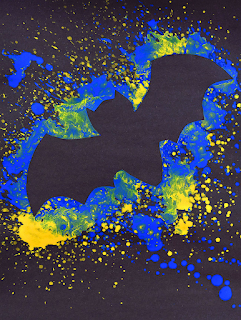The right tools helps you and give you freedom to do your work that bring the beautiful artistic version of your life . So here are some items that a novice artist must know . So If you are getting ready to to setup your own work place these tools will set you in a good stead . Pencils Wooden and mechanical, Staedtler, Derwent and Pentel, pencils pencils are an essential art tool for creatives. Find a brand you like working with and make sure you have always have a quality and varied selection close at hand. Eraser just like pencils , the workstation of an artist wouldn't be complete. This is one of the essential tool . Pens If you prefer to work with pen tool there is a variety of brands that you can follow . Faber-Castell, for example, have a lovely selection. Sketchbooks To do your work by all the above tools you need a paper to use them so you can use ant type of paper according to your requirments .like A3,A4 and A5...
ART HACKS
These are amazing art hacks if you’re a beginner or if you’re just looking for some fun and creative ways to spice up your art.
1. Splatter
Utilizing your brushes or an old toothbrush to splatter paint onto a piece is probably the most straightforward ways you can rapidly add detail and upgrade a piece. Regardless of whether it be white stars in a night sky, brush in a scene, or spots on a face, the arbitrary markings of paint splatter can add the perfect touch to any piece.
2. Tape is Your BFF
There are incalculable approaches to utilize tape while making workmanship. Regardless of whether you're simply adding a tasteful line with fresh, clean lines, or you're making extraordinary plans, it's an ideal opportunity to get imaginative with tape.
Investigate how Leslie Tieu utilizes ¼" tape to make designed works of art:
3. Use Household Items to Enhance Watercolor Paintings
You don't have to go through cash to exploit these hacks. Utilize regular things you probably have around the house to add surfaces and subtleties to your watercolor works of art.
Salt:
Sprinkling rock salt or table salt on a wet watercolor wash makes a one of a kind impact that you can use for a foundation, sand, rocks, or whatever your inventive brain wants. Allow the salt to sit on top of the wash until dry, then, at that point brush it away.
Wipes:
Wipes function admirably to make foliage. Look at Gay Kraeger's strategy for making trees with a wipe. Ensure the wipe layer is dry prior to including the wash top. See the full video here.
4. Use Watercolor Pencil (Not Graphite) for Your Sketch Prior to Painting
Roughing in a sketch preceding work of art with watercolor is an extraordinary method to manage yourself through a piece. Be that as it may, graphite pencil isn't water-dissolvable and may show through your completed piece in the event that you get excessively awkward. All things being equal, utilize a watercolor pencil to delicately draw your framework first. Watercolor pencil is water-solvent and will break up directly into the paint as you lay it down, so you will not have any lines appearing through your last piece.
5. Use Gouache to Enhance Watercolor Paintings
Gouache can be an incredible apparatus to have in your back pocket to upgrade any watercolor piece. Since watercolor paint is clear, it tends to be a smidgen more testing to accomplish a specific component of liveliness. Numerous craftsmen love the properties of watercolor simply the manner in which they are and use it as a result of its straightforward nature. Notwithstanding, an energizing method to punch up a watercolor painting is to add gouache paint on top. Gouache is obscure, making it ideal for adding strong layers. You can likewise include gouache top of dull shadings dissimilar to watercolor, where it is impetrative to work from light to dim.
6. Mixing Charcoal
Kirsty Partridge has a couple of key strategies she utilizes that are successful for mixing charcoal to make practical drawings.
Paint Brush
Kirsty utilizes a round paint brush to streamline the grainy look of charcoal and fill in every one of the white pieces of paper that the charcoal didn't reach
Tissue
To mix bigger spaces of a drawing, Kirsty utilizes a tissue in a roundabout movement.
Mixing Stump
Mixing stumps are incredible for diving into little subtleties of a piece. It's ideal to utilize a roundabout or clearing movement, lifting the stump toward the finish of the stroke to keep away from lopsided mixing that can happen with a to and fro cleaning movement.
The most effective method to do it:
To begin with, it's critical to utilize dark paint when splattering (particularly stars) so the markings appear. White watercolor is frequently excessively clear, so utilizing gouache or acrylic for splatter is ideal.









Comments
Post a Comment